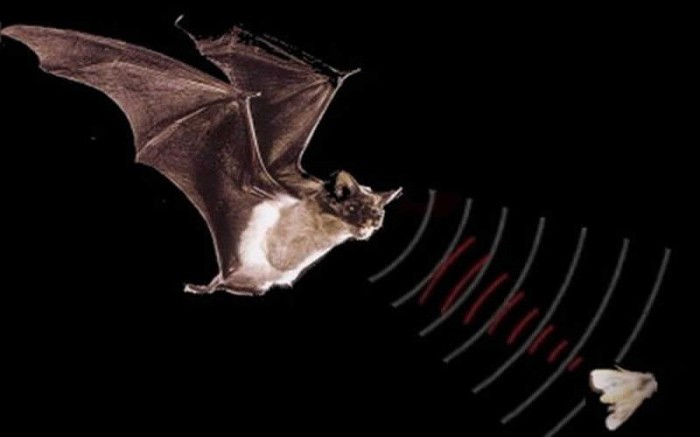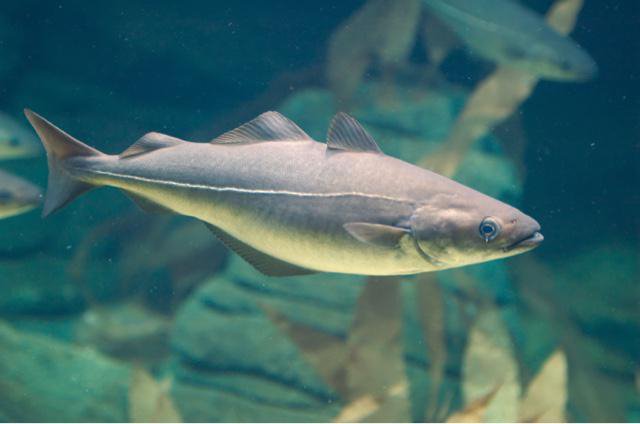What is echolocation in animals
Everyone knows that bats and dolphins emit ultrasound. Why is it needed and how does it work? Let's figure out what is echolocation and how it helps animals and even humans.
What is echolocation

Echolocation, also called a biosoner,is a biological sonar used by several species of animals. Echolocating animals emit signals to the environment and listen to echoes of those calls that come back from different objects near them. They use these echoes to locate and identify objects. Echolocation is used for navigation and forage (or hunting) in various conditions.
Principle of operation
Echolocation is the same as activesonar, which uses sounds reproduced by the animal itself. The ranking is performed by measuring the time delay between the animal's own sound radiation and any echoes coming back from the environment.
Unlike some sonars created bya person who relies on extremely narrow rays and a set of receivers to localize the target, the method of animal echolocation is based on one transmitter and two receivers (ears). Echoes that return to the two ears arrive at different times and at different loudness levels, depending on the position of the object that generates them. Differences in time and loudness are used by animals to perceive distance and direction. With echolocation, a bat or other animal can see not only the distance to the object, but its size, what animal it is, and other characteristics.
The bats

Bats use echolocation for navigationand forage, often in complete darkness. They usually go out of their lodging in caves, attics or trees at dusk and hunt for insects. Thanks to echolocation, bats took a very advantageous position: they hunt at night, when there are many insects, less competition for food and fewer species that can hunt bats themselves.
Bats generate ultrasound through the larynxand radiate sound through an open mouth or, much less often, a nose. They emit sound in the range of 14,000 to over 100,000 Hz, mostly outside the human ear (typical human hearing range is 20 Hz to 20,000 Hz). Bats can evaluate the movement of targets by interpreting patterns caused by the reflection of echoes from a special flap of skin in the outer ear.
Specific species of bats useecholocation in certain frequency bands, which correspond to their living conditions and types of production. This was sometimes used by researchers to determine the species of bats inhabiting this area. They simply recorded their signals with the help of ultrasonic recorders, known as bats detectors. In recent years, researchers from several countries have developed signal libraries for bats that contain records of local species.
Sea creatures

The biosonar is valuable for the suborder of toothed whales,which includes dolphins, porpoises, killer whales and sperm whales. They live in an underwater habitat that has favorable acoustic characteristics, and where the vision is extremely limited due to the turbidity of the water.
The most significant first results in descriptionThe echolocation of dolphins was made by William Shevill and his wife Barbara Lawrence-Chevill. They were engaged in feeding dolphins and once noticed that they unerringly find pieces of fish that quietly descended into the water. This discovery was followed by a number of other experiments. At the moment it is established that dolphins use frequencies in the range from 150 to 150 000 Hz.
The echolocation of blue whales has been studied much less. So far, only assumptions are being made that "songs" of whales are a way of navigation and communication with relatives. This knowledge is used to calculate the population and to track the migration of these marine animals.
Rodents

It is clear that such an echolocation in marine animalsand bats, and what they need it for. But what for it to rodents? The only terrestrial mammals capable of echolocation are two kinds of shrews, teirkas from Madagascar, rats and crevices. They emit a series of ultrasonic squeaks. They do not contain echolocation responses with reverberations and, apparently, are used for simple spatial orientation at close range. Unlike bats, shrews use echolocation only to study the habitats of the prey, and not for hunting. With the exception of large and thus highly reflective objects (for example, a large stone or tree trunk), they are probably not able to unravel the echo scene.
The most talented echolators

In addition to these animals, there are others,capable of engaging in echolocation. These are some species of birds and seals, but the most sophisticated echolocators are fish and lampreys. Previously, scientists considered bats to be the most capable, but in recent decades it turned out that this is not so. Air environment does not have to echolocation - in contrast to water, in which the sound diverges five times faster. The echolocation of fish is the lateral line organ that perceives the vibrations of the environment. Used for both navigation and hunting. In some species, there are also electroreceptors that detect electrical fluctuations. What is the echolocation for fish? Often this is synonymous with survival. She explains how blinded fish could survive to the venerable age - they did not need sight.
Echolocation in animals helped to explain similarability of visually impaired and blind people. They orient themselves in space with the help of their clicking sounds. Scientists say that such short sounds produce waves that can be compared with the light of a flashlight. At the moment, there is too little data to develop this direction, since capable echolocation in humans is a rarity.
</ p>



